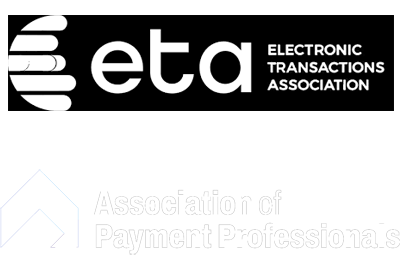22 Jul

Introduction
In today’s digital age, businesses are constantly seeking convenient and efficient ways to process credit card payments. One such solution that has gained popularity is the virtual terminal. A virtual terminal is a web-based application that allows businesses to process credit card transactions without the need for physical card terminals or point-of-sale systems. In this comprehensive guide, we will delve into the world of virtual terminals and explore their functionality, benefits, and how they simplify credit card processing for businesses. By understanding the power of virtual terminals, you can streamline your payment operations and provide a seamless experience for your customers.
What is a Virtual Terminal?
A virtual terminal is a web-based application that allows businesses to process credit card transactions remotely without the need for physical card terminals. It provides a secure online platform where merchants can manually enter credit card information and initiate transactions.
How Does a Virtual Terminal Work?
To use a virtual terminal, businesses log in to a secure web portal using their credentials. Once logged in, they can enter the customer’s credit card information, transaction details, and process the payment in real-time. The virtual terminal securely transmits the payment data to the payment processor for authorization and settlement.
Key Features and Functionality
Virtual terminals offer a range of features and functionality that simplify credit card processing. These features include:
Payment Entry
Merchants can manually enter credit card information, including cardholder name, card number, expiration date, and security code, into the virtual terminal for processing.
Card Verification
Virtual terminals allow merchants to verify the validity of credit cards by checking the card’s security code and performing address verification services (AVS) to reduce the risk of fraudulent transactions.
Recurring Billing
Virtual terminals often support recurring billing, enabling businesses to set up automatic and scheduled payments for subscription services, membership fees, or installment-based transactions.
Benefits of Using a Virtual Terminal
Implementing a virtual terminal for credit card processing offers several benefits for businesses:
Flexibility and Accessibility
Virtual terminals provide businesses with the flexibility to process credit card transactions from anywhere with an internet connection. This accessibility allows for remote payment acceptance, making it ideal for businesses that operate on the go or have a significant online presence.
Cost-Effective Solution
Virtual terminals eliminate the need for expensive physical card terminals, reducing upfront costs. Additionally, businesses can avoid ongoing maintenance and rental fees associated with traditional card terminals, making virtual terminals a cost-effective solution.
Streamlined Operations
By consolidating payment processing into a single online platform, virtual terminals streamline payment operations. Businesses can manage transactions, generate reports, and perform administrative tasks within the virtual terminal, simplifying workflows.
Enhanced Security
Virtual terminals prioritize security by adhering to industry-standard data encryption protocols. This ensures the protection of sensitive customer information, reducing the risk of data breaches and enhancing customer trust.
Industries that Benefit from Virtual Terminals
Various industries can leverage the advantages of virtual terminals, including:
E-commerce Businesses
Online retailers and e-commerce businesses benefit from the ability to process credit card payments securely and efficiently, even without a physical storefront.
Service-based Companies
Service-based businesses, such as professional consultants, contractors, and freelancers, can conveniently accept credit card payments for services rendered, whether in-person or remotely.
Non-Profit Organizations
Non-profit organizations can utilize virtual terminals to accept donations, membership fees, and event registrations, providing a convenient and secure way for supporters to contribute.
How to Set Up a Virtual Terminal
Setting up a virtual terminal involves a few key steps:
Choosing a Payment Processor
Select a reputable payment processor that offers virtual terminal services. Consider factors such as transaction fees, security measures, customer support, and integration capabilities.
Account Setup and Integration
Follow the payment processor’s instructions to set up an account and integrate the virtual terminal into your website or business systems. This may involve obtaining an API key or configuring plugins for popular e-commerce platforms.
Security and Compliance
Ensure your virtual terminal setup adheres to industry security standards, such as Payment Card Industry Data Security Standard (PCI DSS) compliance. Implement necessary security measures, including encryption, firewalls, and user access controls, to protect sensitive payment data.
Virtual Terminal vs. Physical Card Terminals
Comparing virtual terminals to physical card terminals helps businesses make informed decisions:
Cost Comparison
Virtual terminals are generally more cost-effective since they eliminate the need for hardware purchases or rentals, reducing upfront and ongoing expenses compared to physical card terminals.
Versatility and Mobility
Virtual terminals offer greater versatility and mobility as they can be accessed from any device with internet connectivity. This flexibility allows businesses to process payments on the go or from multiple locations.
Scalability
Virtual terminals can easily scale with business growth, accommodating higher transaction volumes without the need for additional physical terminals or hardware upgrades.
Best Practices for Using a Virtual Terminal
To maximize the benefits of a virtual terminal, consider the following best practices:
Secure Data Handling
Adhere to data security best practices, such as encrypting payment data, using secure connections, and regularly updating software, to protect customer information from unauthorized access.
Training and User Access Control
Provide proper training to employees who will be using the virtual terminal and implement user access controls to ensure only authorized personnel can access and process payments.
Conclusion
Virtual terminals offer businesses a convenient and efficient way to process credit card transactions without the need for physical card terminals. By leveraging the flexibility, cost-effectiveness, and security features of virtual terminals, businesses can streamline their payment operations and deliver a seamless payment experience to their customers. Whether you operate an e-commerce store, offer professional services, or run a non-profit organization, a virtual terminal can empower you to accept credit card payments with ease and efficiency.






